The Philippine national baseball stadium was packed—but no cheering or booing came from the bleachers, nor were there athletes on the field. Instead, over 7,500 Filipinos sat waiting on July 25—for the first time since the imposition of a total lockdown in mid-March—for the chance to finally return home.
In one of the strictest pandemic responses in Asia, President Rodrigo Duterte placed the whole main Philippine island of Luzon—one-third of the nation—under “enhanced community quarantine,” the most uncompromising level of lockdown, on March 16. Fifty-five million were under “strict home quarantine,” unable to leave unless to buy food or medicine.
Effectively sealing the borders of the nation’s capital Manila meant that over 100,000 Filipinos from other provinces became jobless and stranded, mostly in the nation’s most dense, most expensive, and most coronavirus-infested city.
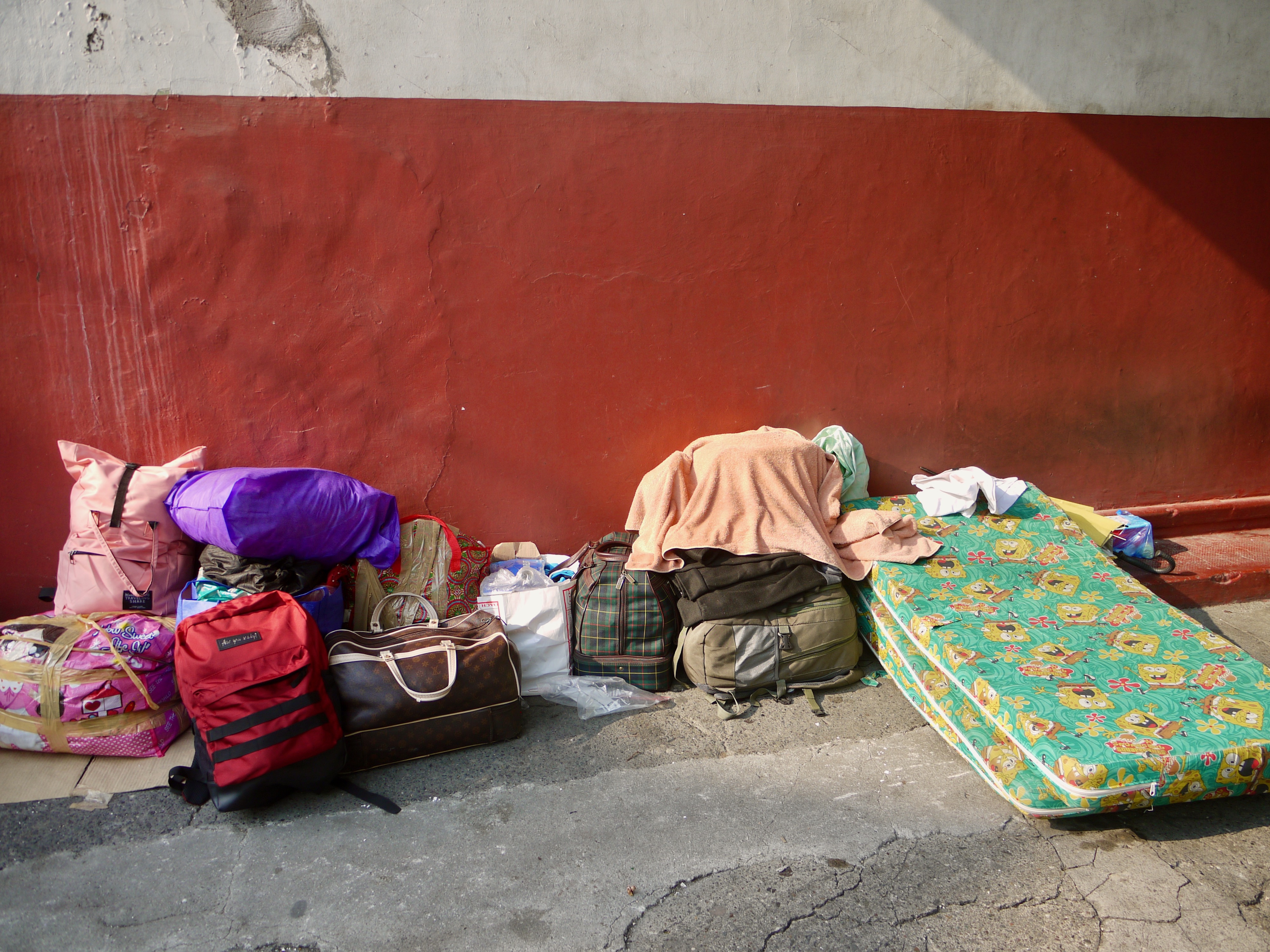
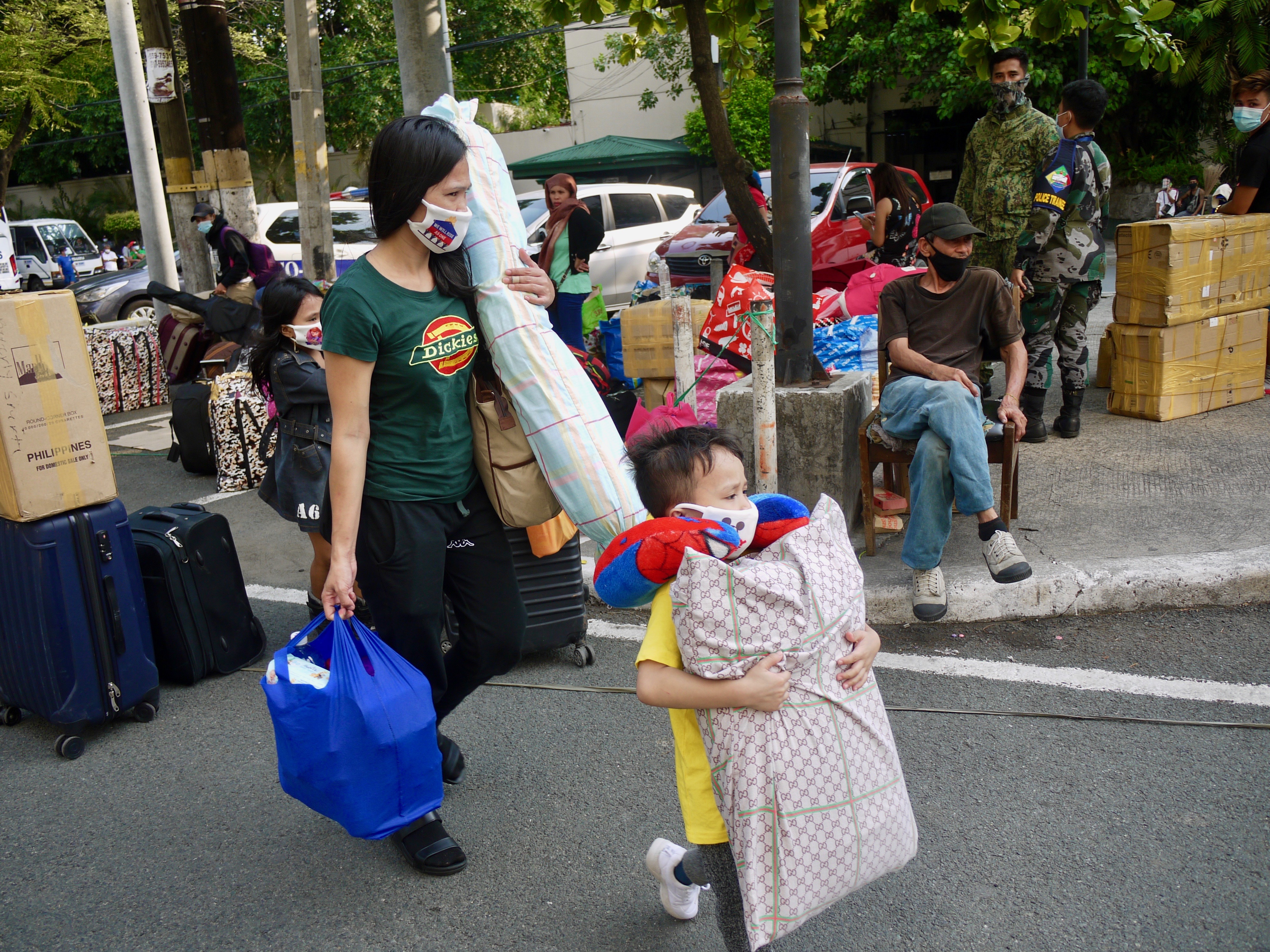
They are called Locally Stranded Individuals (LSI), or Filipinos stuck in a specific Philippine locality away from their home, who have expressed intention to return to their place of residence. Many had traveled to Metro Manila before the pandemic to find a job or to apply to work abroad. Some were working in the city but lost their jobs because of quarantine.
The class also includes construction workers and domestic workers, students, and tourists. The over 100,000 repatriated and displaced Overseas Filipino Workers—a historic return—comprise an entirely different class, and an entirely different crisis, for the government.
Even as public transportation bans eased over time, interprovincial buses remain off the roads. Understanding the slim chances of making it home within the early months of summer, LSIs had to find shelter.
Carrying her masked daughter and with her face shield-clad son hiding behind her, Queenly Gequillan, 31, stood guard over her pile of backpacks, totes, a carseat and clear container of Legos—all she possessed over the last
five months. She came to Manila from Romblon, at least 10 hours away by ferry and bus, to look for “any kind of work.” Already finding it difficult before the pandemic, she told VICE News that as soon as the lockdown hit, she knew her job search would prove impossible. During the strict lockdown, she was lucky to have an uncle living in Tondo who took in the family of three.
Finding a roof to put over one’s head was not as easy for others, many of whom braved the Philippines’ tempestuous rainy season under expressways and on sidewalks. Michelle Silvertino, 33—an LSI, and house cleaner in Quezon City—left her employer on June 1 to reunite with her four children in Calabanga, 400 kilometers away from Manila. She made her way to the airport on foot, but after finding it closed, she walked to a bus stop which also had halted operations.
She died on a pedestrian overpass waiting for a bus on June 5, likely of COVID-19, according to her death certificate. Making headlines, her death became a rallying cry for better, and more immediate, government assistance to those stranded in the crisis. The government gave Silvertino’s mother 15,400 Philippine pesos ($313) to take care of the single mother’s children, and vowed to take quick action to ensure Silvertino’s case would not be repeated.
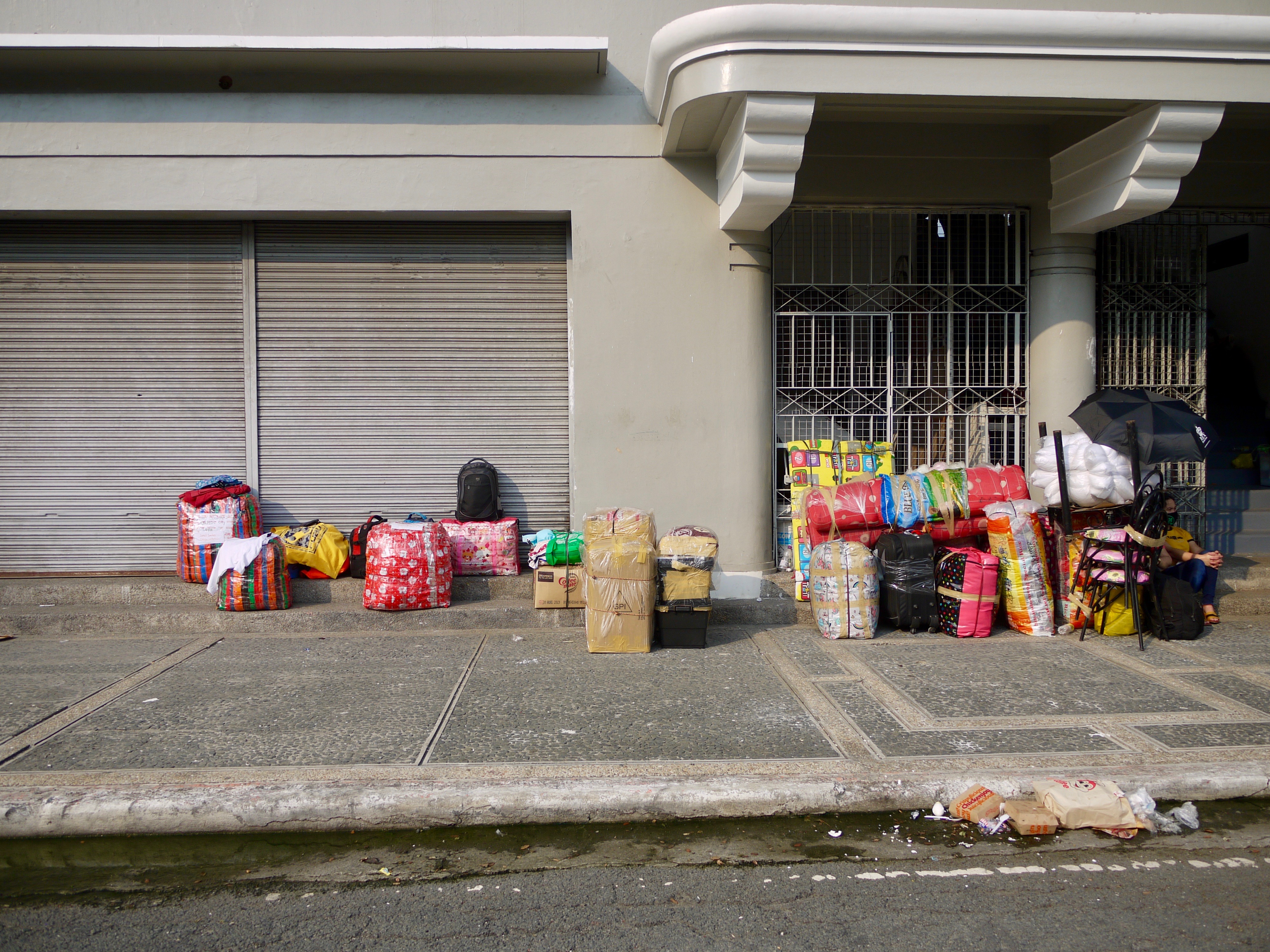
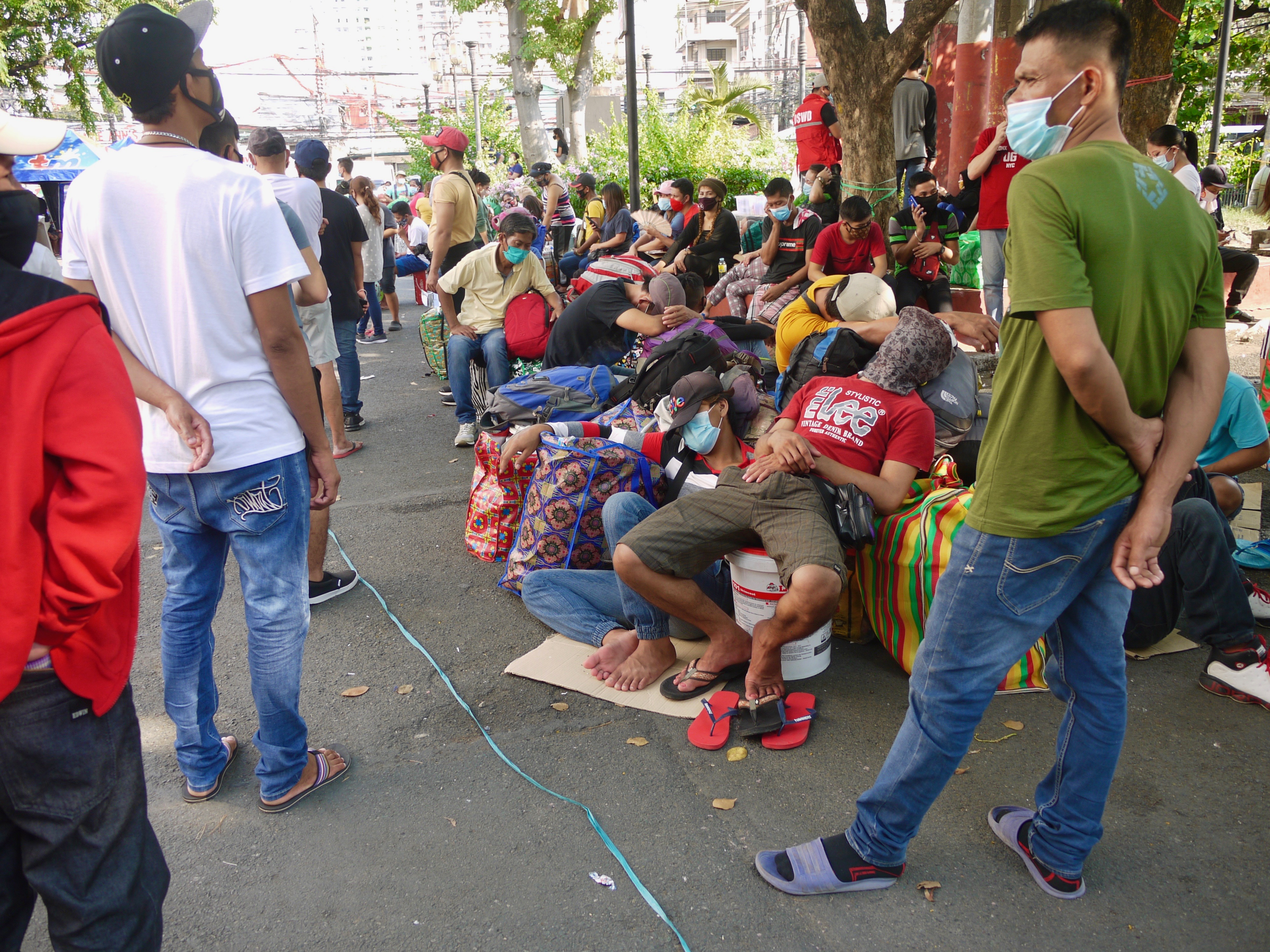
To respond to the growing LSI crisis, the government created the Hatid Tulong program. In batches, LSIs would be given a free one-way ticket—by bus, ship, or train—to get back to their home provinces after the lockdown had lifted. On the weekend of July 25, the government took control of the Rizal Memorial Sports Complex as the site to hold LSIs, as they got grouped and filed into 120 province-bound buses and five sea vessels.
Each LSI was also given a rapid antibody test. But even the Hatid Tulong initiative was fraught with flaws.
In the stadium for one weekend, LSIs sat shoulder-to-shoulder with little to no social distancing. In the background, the Philippine National Police band played Rey Valera hits among other songs—to “ease up the tension, the heat,” Metro Manila Police Chief Deblod Sinas said in a Sunday press briefing. Under tents, uniformed Manila Police officers handed out bottled water, eggs, and meals of chicken and rice as they processed the LSIs inside the stadium.
Along the stadium’s exterior walls, LSIs sat alongside their taped-up boxes, labeled suitcases, tarpaulin totes, and plastic bags with gifts for children back home. Megaphone-wielding Manila police officers yelled out province names—”Sulu! “Sulu! Traveling to Sulu!”—as LSIs would wave their arms and rush forward to finally load the bus heading toward their home city.
The government said it “chose the lesser between two evils” in prioritizing shelter from the rain over social distancing for the LSIs. “In the past days, all those people were in the streets. They were rained on for two days, they were exposed to heat, and we had to make a decision in order to give proper shelter to our countrymen,” said Hatid Tulong lead convener Joseph Encabo. Presidential Spokesman Harry Roque said that “mistakes were made.”
After the weekend, at least 48 LSIs tested positive for COVID-19, according to the Philippine Inquirer.
Wilson Fortaleza, spokesperson of Partido Manggagawa (Labour Party) and one of the convenors of Nagkaisa Labor Coalition, told VICE News that the LSI crisis, brought forth by a poorly planned lockdown, showed that the government had failed to provide the most basic of needs to its people.
“In the case of the locally stranded individuals, many are those who lost their jobs and their livelihood in the streets, street vendors for instance, who were just wandering around, getting no attention,” Fortaleza said, adding that thousands of LSIs, including hundreds stranded on an airport’s overpass, were transferred to different facilities that did not observe minimal health standards.
Thinking that the plans were carried out without careful prior analysis, Fortaleza said the government could have better thought out a safer system based on clusters or batches by province.
“These people have no other means, they have no money. To keep them in such a place is inhumane,” he said. “Do we ask too much from the government? We simply ask for the most basic things.”
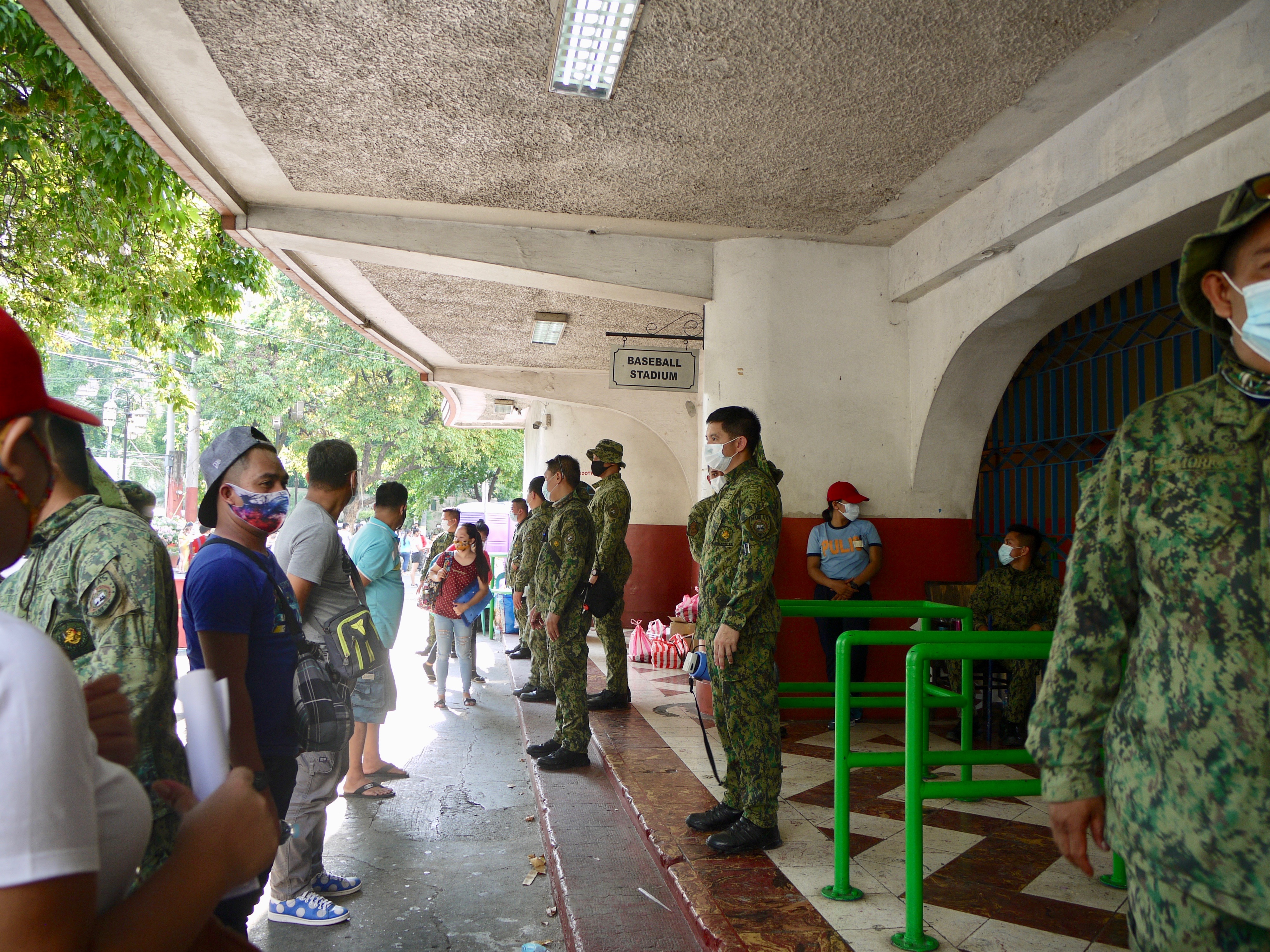
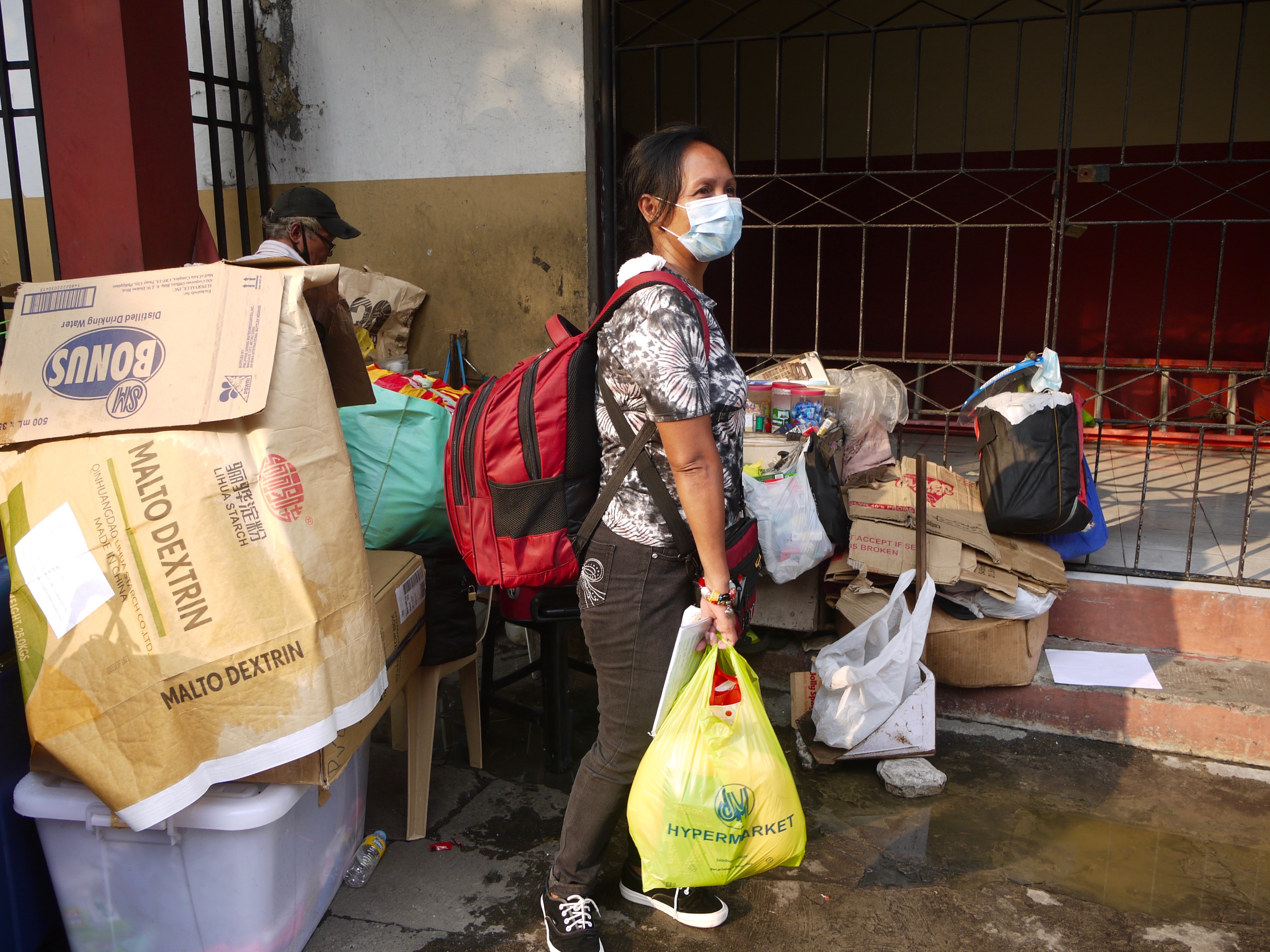
For Fatima Sarifah, an LSI, the government’s lack of planning meant sleeping for five months in a graveyard.
Working as a private chef for a family in Qatar, she flew back for vacation to visit her daughter and son. She was meant to return to work on March 24, but her flight was suspended then canceled. She only brought enough cash to cope for a few days in March—not to sustain herself until late July. Unable to return to her children in the province due to the lockdown, settling down in Manila South Cemetery was her best option.
“I don’t have work here. There is no one to ask for help, no one to ask for food. What will I do here? I’ve been stranded for almost five months,” Sarifah told VICE News. “I don’t have any money to support myself. Even the food is very hard to provide.”
To get from the cemetery to the stadium, she walked for three hours, unable to catch or pay for a ride. She carried with her only a backpack of clothes, and a pillow for the 32-hour trip back to her home province in Zamboanga City in Southern Philippines.
“I’m very excited, I will see my daughter and my son and my sisters. I haven’t been in contact with them for the past three months because I can’t buy any [phone credits] to call them.”
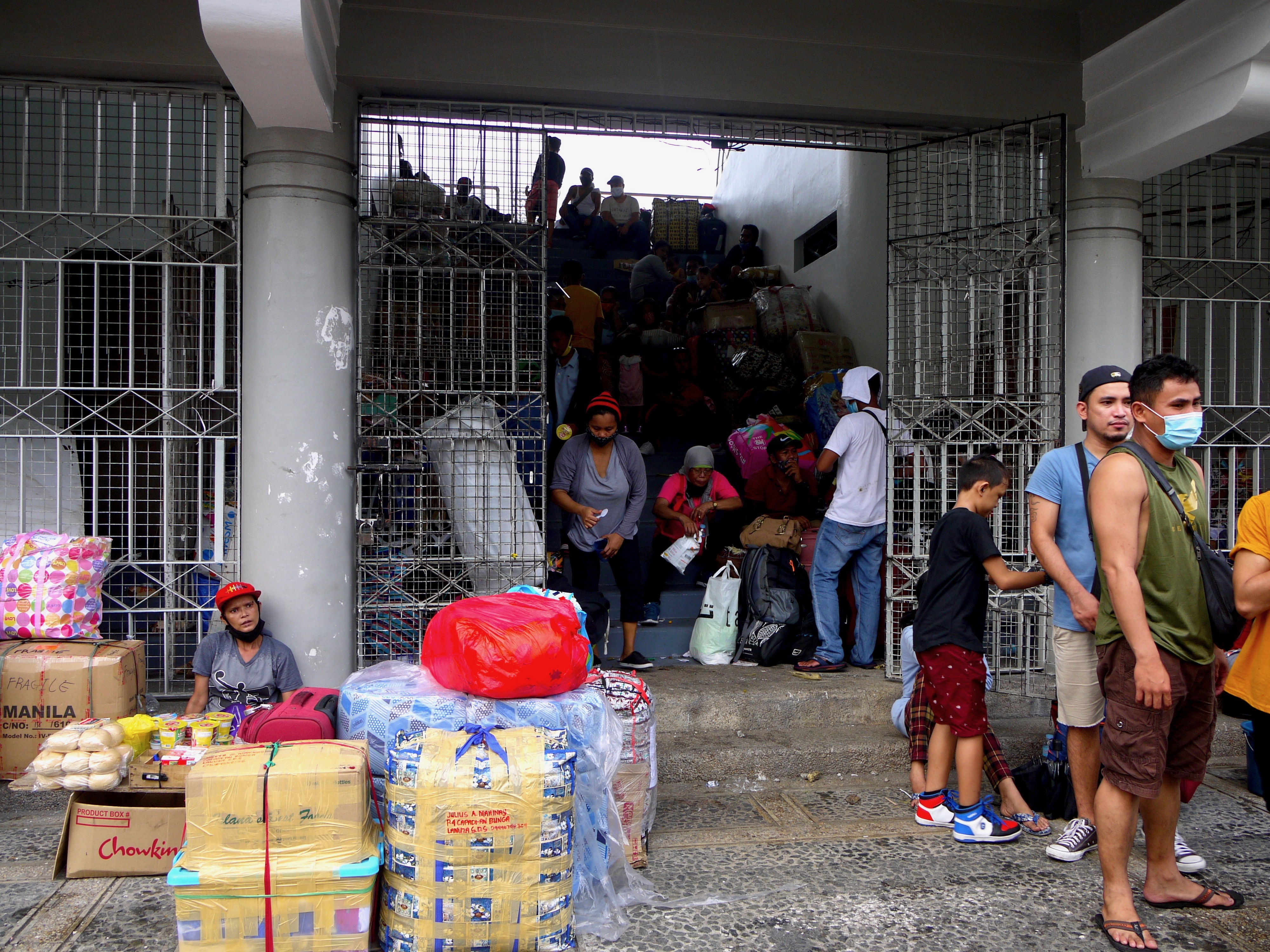
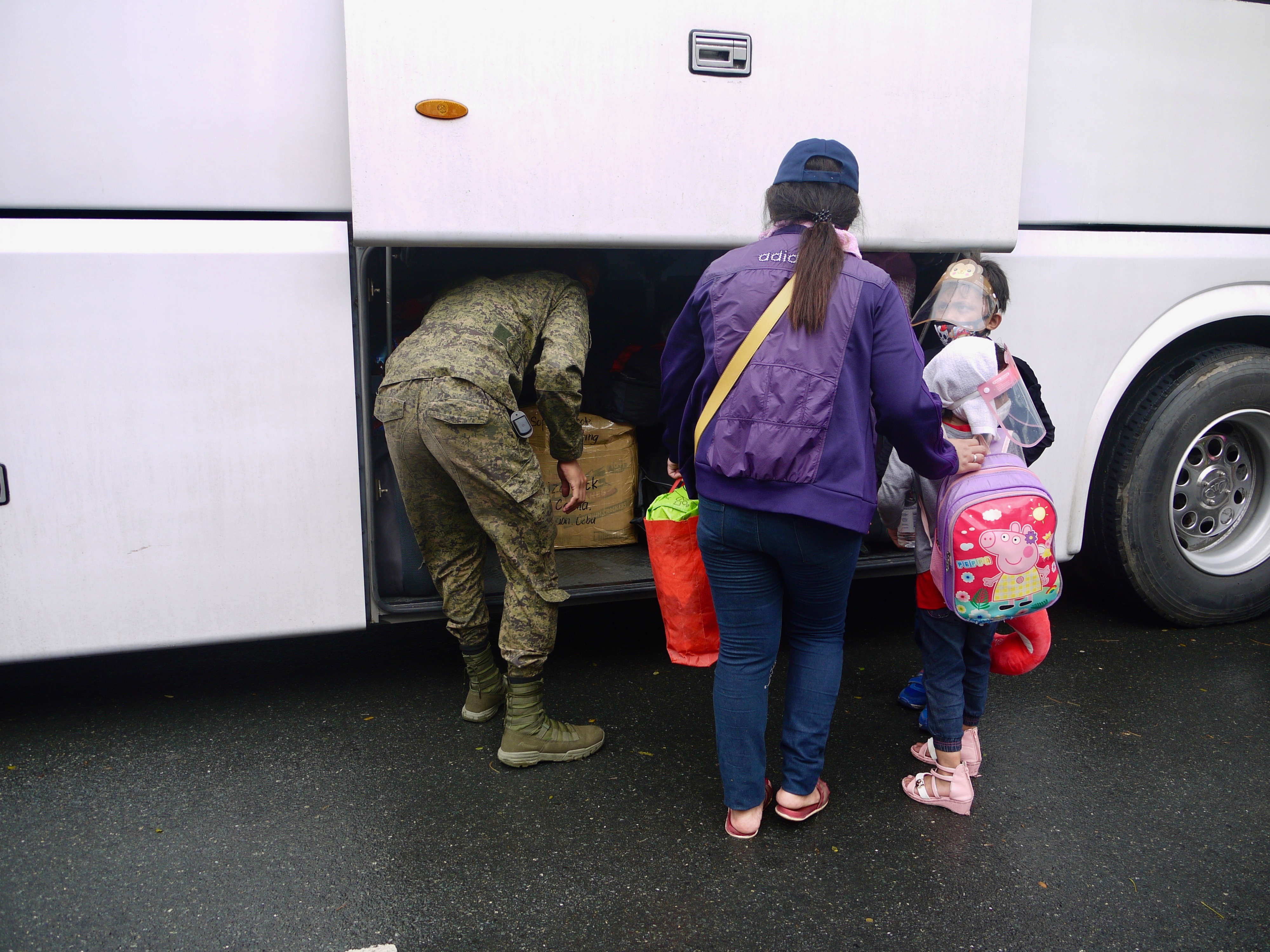
Experts say the LSI crisis highlights just how uncoordinated the Philippine government’s pandemic response has been.
The day after the mass LSI staging at the Rizal Memorial Sports Complex, Duterte gave his fifth annual State of the Nation Address at the House of Congress. At the podium, he lauded his administration’s early pandemic intervention—with one of the world’s longest and strictest lockdowns—for preventing as many as 1.3 to 3.5 million infections.
But the reality on the ground, rife with mismanagement as cases climb at stunning rates, is no cause for celebration. In fact, just six days later, on the evening of August 2, Duterte re-imposed a strict lockdown responding to desperate pleas from frontliners as hospitals buckled under the weight of the pandemic.
By the start of August, Philippine coronavirus cases topped 103,000 cases. With the highest daily rates of infection reaching 5,000, the nation is quickly catching up to Indonesia for the the title of most cases in Southeast Asia.
The re-imposition of the lockdown however, shows the government has learned little.
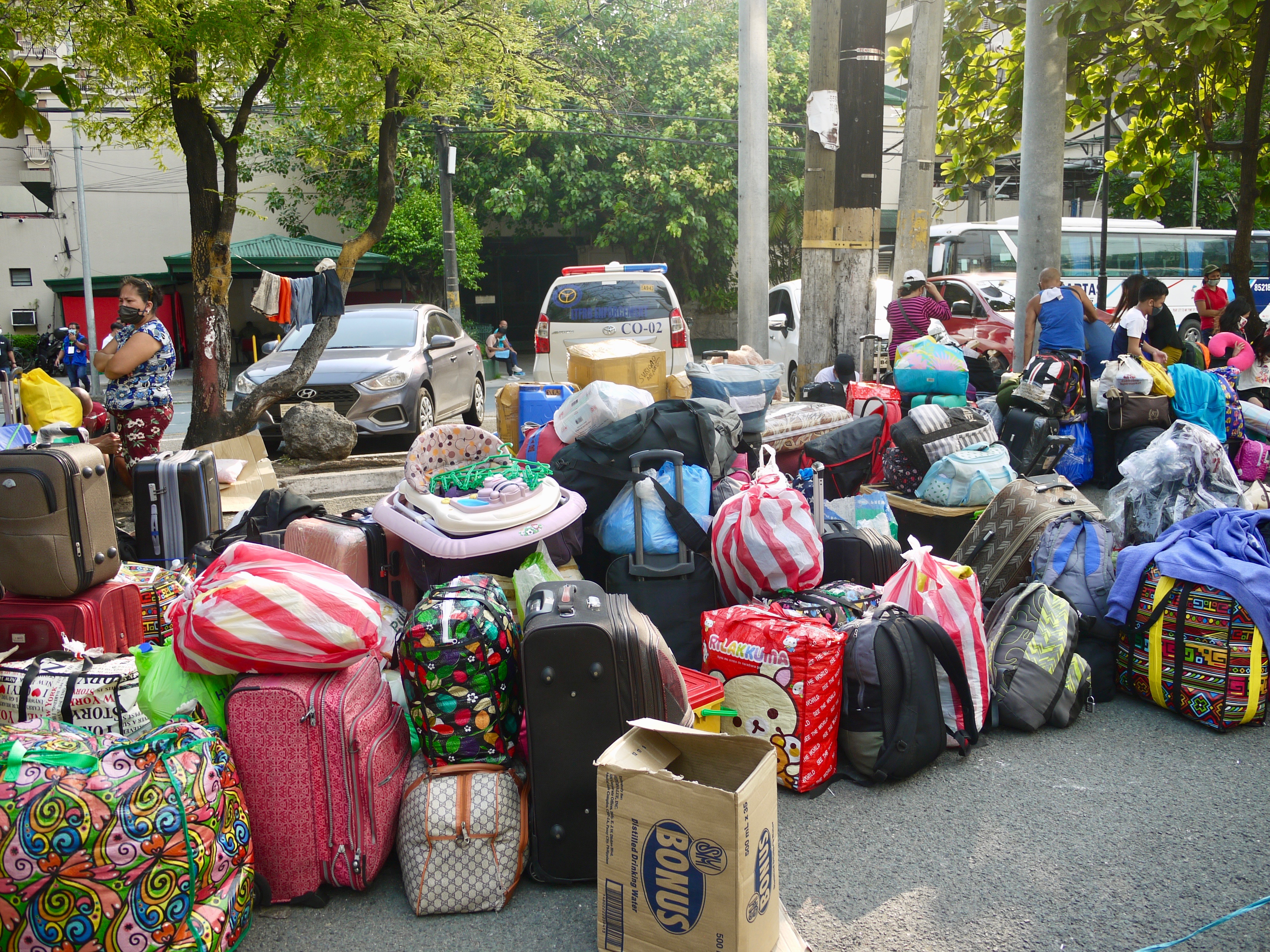
Gino Trinidad, an Ateneo de Manila University political scientist, told VICE News that while community quarantines may have helped cushion the impact of the coronavirus, a strong reliance on tough lockdowns in conjunction with scant focus on other preventative measures was a lethal combination.
“Lockdowns are supposed to be the most blatant and immediate way of at least containing the spread of the virus, to be complemented by mass testing, contact tracing, and strengthening the state's public health capacity,” he said, adding that the Philippines is “lagging behind” on the latter three points.
In March, the Department of Health announced that it did not “see the need” for mass testing, and only began targeted testing on April 14, when over 200 people were getting infected daily. The Metro Manila intensive care unit capacity was stretched to its limit by April, and by July several hospitals were unable to accept new COVID-19 patients.
Rather than investing in effective strategies proven by other countries, some experts say the government reverted to containment through military tactics when lives were already at risk.
“My orders to the police and the military, if anyone creates trouble, and their lives are in danger: shoot them dead,” Duterte said in Filipino in a televised national address in April.
Soldiers became frontliners when Duterte deployed 2,500 troops and 800 uniformed reservists across Metro Manila in April to assist the police in enforcing the aggressive lockdown—even tapping the military on July 31 to solely distribute the coronavirus vaccine. Three ex-generals are at the helm of the nation’s primary COVID-19 response agencies. Since the start of the pandemic, the police have arrested over 76,000 curfew violators—a response some say is a band-aid solution to, or a distraction from, addressing the mass loss of livelihoods during the pandemic.
Dennis Blanco, a political scientist at the University of the Philippines, told VICE News that the COVID-19 solution does not require a military approach, but instead a medical professional-led and civilian approach based on medicine and science.
He said that while an estimated one-month-late implementation of quarantine measures contributed to widespread infection, the “game changer” was the government’s early easing of quarantine measures—particularly in the National Capital Region on June 1—without sufficient safeguards to prevent a surge of cases.
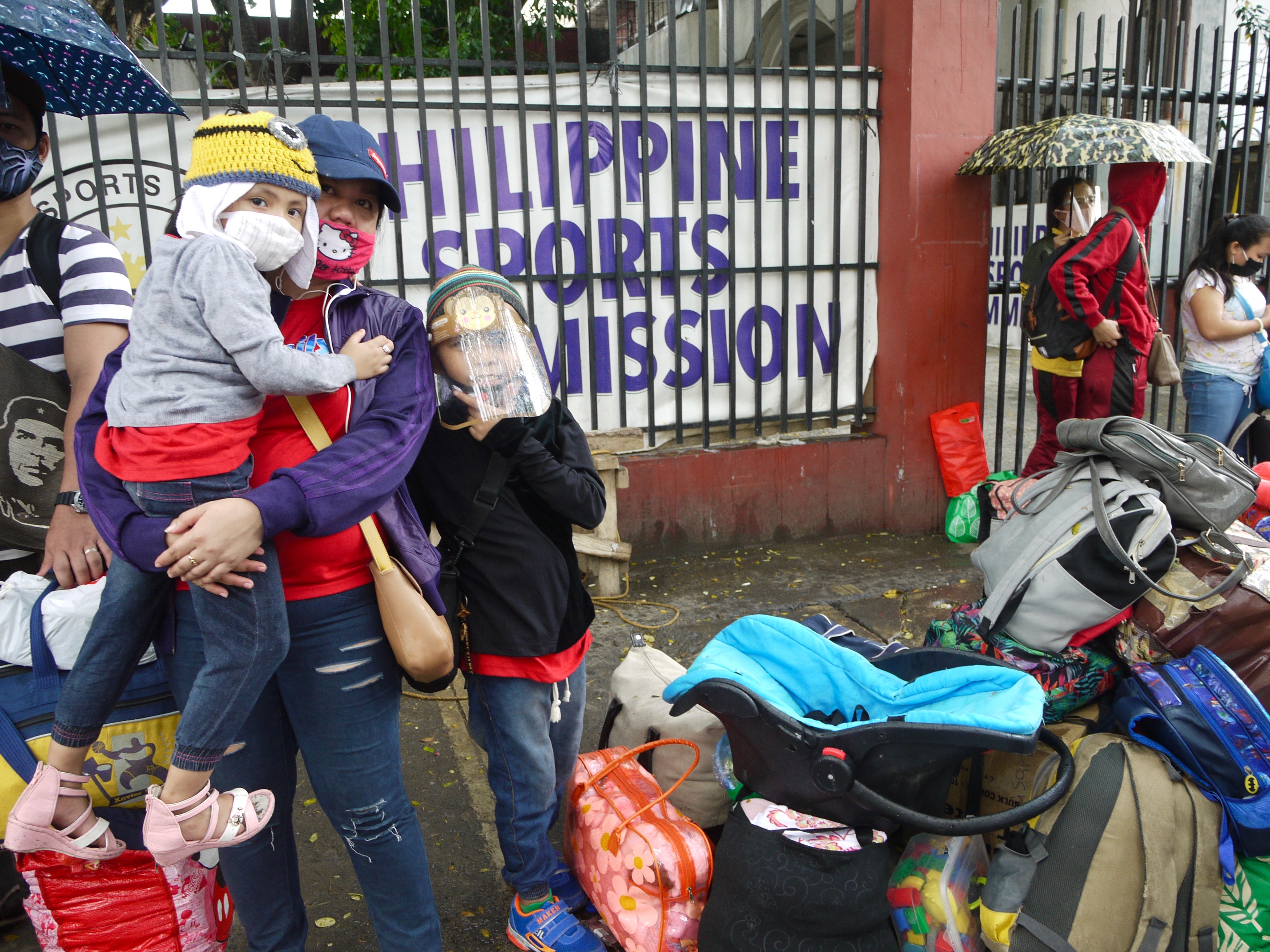
The pandemic also unraveled the fragility of the relationship between the national government and local government units, including provincial and barangay, or the most local neighborhood government. As the government sent back the LSIs by bus, for example, some local governments refused to accept the stranded individuals for fear of infection until Duterte stepped in.
The national government only provided the “general framework” for COVID response, leaving mayors—of provinces with vastly differing resources and capacities—to make strategies on their own.
Ken Abante, a policy researcher and former chief of staff for the strategy, economics, and results group at the Department of Finance, told VICE News that the government budget remains a major concern: the government is not spending its 390 billion pesos or USD 7.9 billion COVID-19 response package as quickly or efficiently as it should be, he said.
Through his COVID-19 Citizens’ Budget Tracker, Abante tracks and holds accountable government pandemic-related spending. With the government only having spent around 63 percent of the total fund, Abante is pushing for “more daring steps” including quicker movement of the emergency subsidies to frontliners and for a total fund increase of 140 billion pesos or USD 6.2 billion.
In an August 2 address that devolved into a tirade, Duterte railed against an over one-million-strong coalition of healthcare workers who criticised the government’s response to the pandemic and sounded a distress signal to say they were losing the battle against COVID-19. While Duterte heeded their pleas for another city-wide lockdown, this was only after he slammed frontliners for their “rampage,” and said they should stop complaining and do some “soul-searching,” while again defending his administration.
This refusal to find fault in his government’s response is a major barrier for any improvement in the Philippine administration’s management of the pandemic.
Abante, citing the government’s past statements that blamed the outbreak on a population that is “not disciplined,” said it’s not Filipinos that are the problem. Rather it is the government’s lack of direction and clarity.
“You need a system and a plan for people to be more disciplined and follow out of their will—and follow because they choose to follow, rather than forcing people to unsustainably follow you,” he said. “For me that is what we have to contend with in the Philippines.”
Find Sammy on Twitter.
from VICE US https://ift.tt/2PmNniG
via cheap web hosting
No comments:
Post a Comment